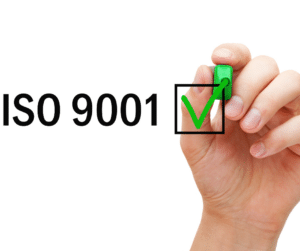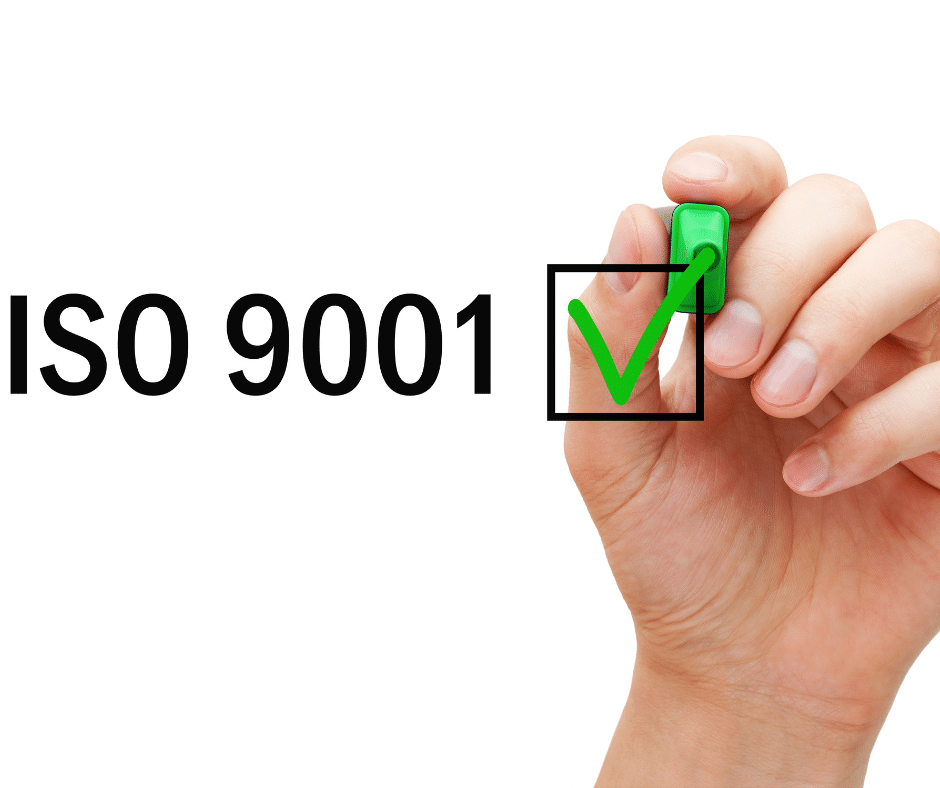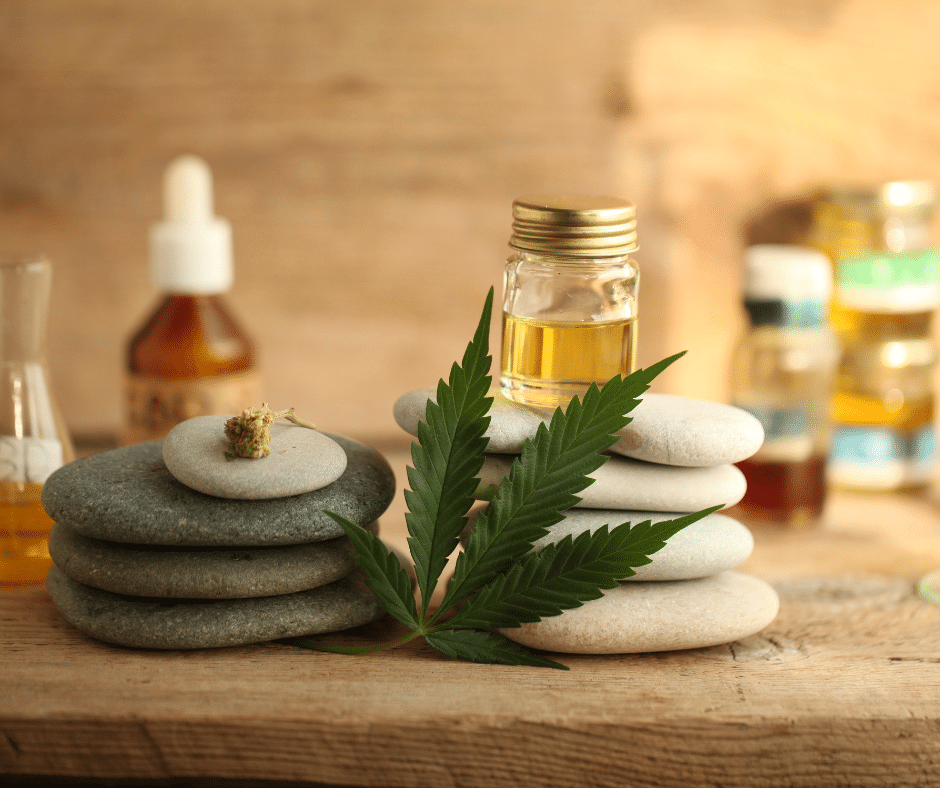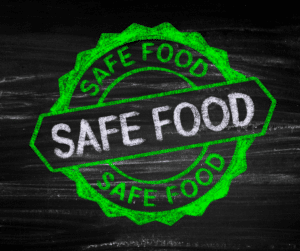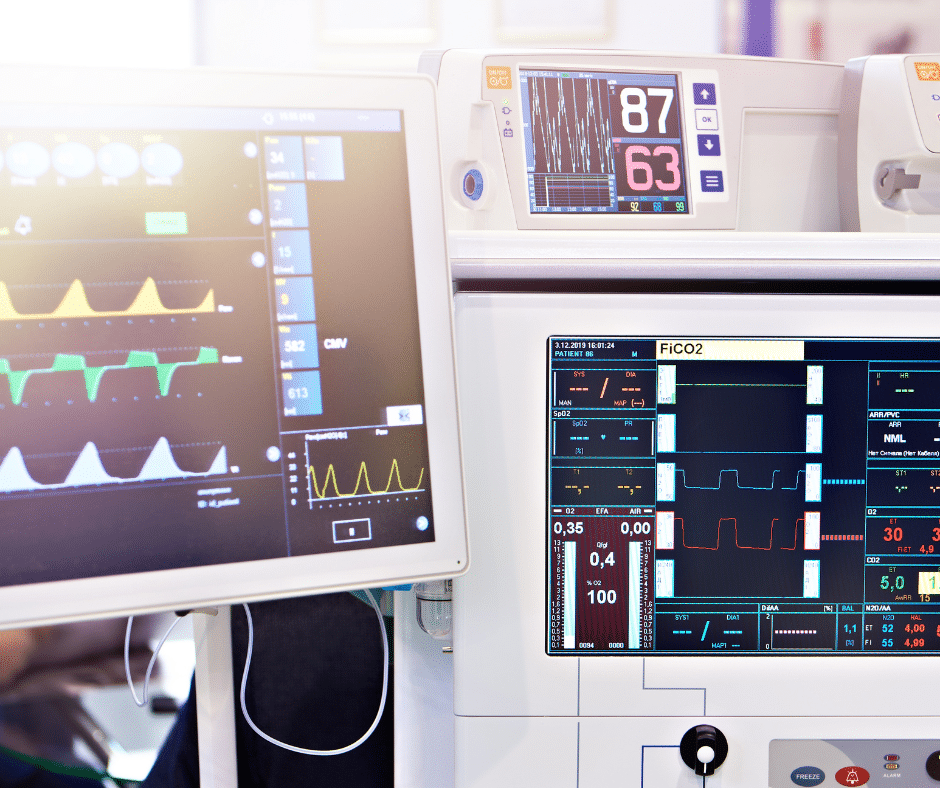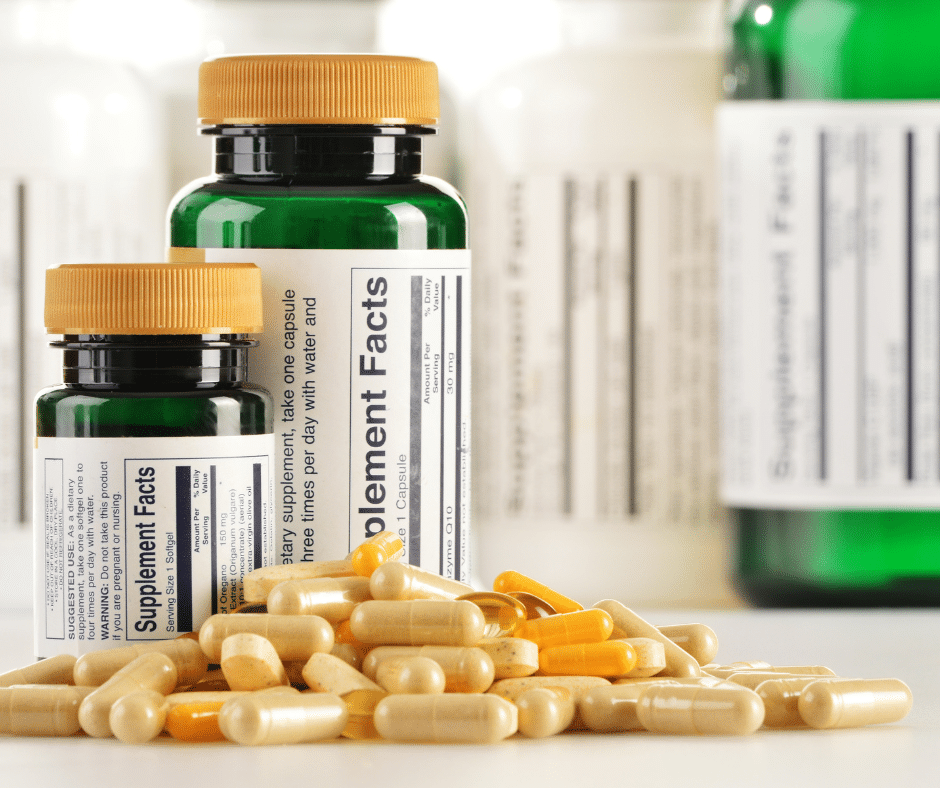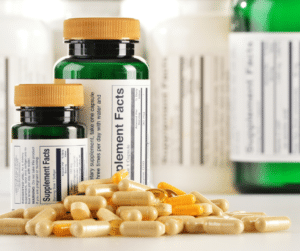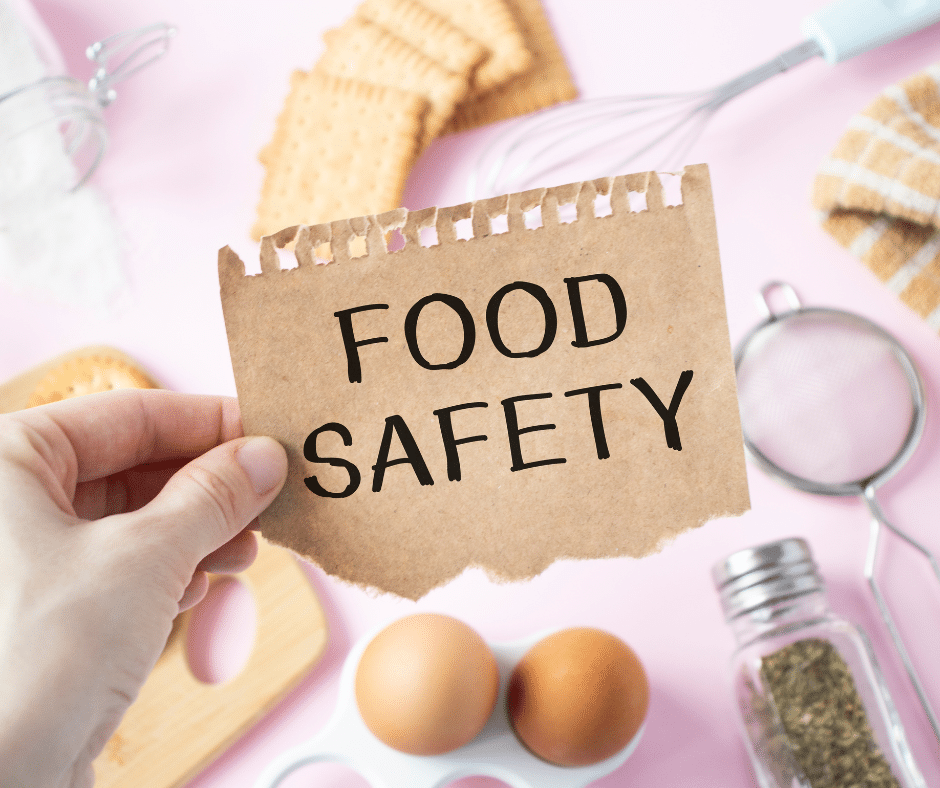 Are you looking to get certified in the Hazard Analysis and Critical Control Points (HACCP) system? The purpose of a Hazard Analysis Critical Control Points (HACCP) plan is to identify and control any hazards that may arise during the process of manufacturing, storing, distributing, and consuming food products. HACCP plans are meant to reduce, eliminate, and avoid risks that may negatively impact the consumer and the organization. They will vary based on the product, process, and other factors that can occur in the facility. Developing a HACCP plan consists of 12 tasks with seven principles, which are further explained below.
Are you looking to get certified in the Hazard Analysis and Critical Control Points (HACCP) system? The purpose of a Hazard Analysis Critical Control Points (HACCP) plan is to identify and control any hazards that may arise during the process of manufacturing, storing, distributing, and consuming food products. HACCP plans are meant to reduce, eliminate, and avoid risks that may negatively impact the consumer and the organization. They will vary based on the product, process, and other factors that can occur in the facility. Developing a HACCP plan consists of 12 tasks with seven principles, which are further explained below.
Completing this certification program means completing seven important steps. In this guide, we’ll provide an overview of the 12 HACCP steps and 7 principles and help you get ahead on your certification process.
Understand HACCP Principles
The first step to getting certified in the HACCP system is to understand the seven principles that makeup HACCP guidelines.
These seven principles, developed by the Codex Alimentarius workgroup, were designed to ensure safe food production and handling. Knowing and understanding these principles will help you when it comes time to complete the certification steps.
Assign Responsibility & Authority
The fifth step of the HACCP certification process is to assign responsibility and authority. By doing this, it will enable all personnel involved in the HACCP system to adhere to the guidelines with a greater degree of consistency. This can be done by providing training to individuals assigned to positions related to HACCP and assigning personnel authority commensurate with their responsibilities within the system. Additionally, establish working relationships between groups of personnel who work together or provide oversight over any food safety process or part thereof.
Identify Critical Control Points (CCPs)
A critical control point (CCP) is a step of the process at which control can be applied to prevent or eliminate food safety hazards.
The seven principles for developing and managing a successful HACCP plan involve formally identifying CCPs, establishing critical limits for each CCP, monitoring these steps, ensuring corrective action is taken when necessary, verifying the system’s effectiveness, making sure all records are maintained, and conducting regular reviews. All of these steps contribute to the proper implementation of the HACCP plan.
Establish Critical Limits at CCPs
Establishing critical limits at CCPs is a hugely important step of your HACCP plan. These limits define the parameters which must be followed to ensure food safety. When determining the critical limits, it’s important to consider the type of hazard and its respective Severity of Consequence (SOC) should it occur. Upper and lower control points are sometimes established to describe the range in which an operation should work. For example, the time/temperature combination necessary for cooking a meat product may have an upper and lower limit that must be adhered to for the food to be considered safe.
Why are HACCP plans important for food businesses?
Food safety is a critical issue for any food business. Consumers expect that the food they consume is safe and of high quality. However, the food production process is complex, and many potential hazards, such as biological, chemical, and physical, can contaminate the food. These hazards can arise at any stage of food production, from receiving raw materials to shipping finished products. Therefore, food businesses need a systematic approach to identify and control these hazards.
This is where a HACCP plan comes in. A HACCP plan is a proactive approach to managing food safety hazards by identifying potential risks and implementing control measures to prevent or reduce them. A HACCP plan is a legal requirement in many countries, and failure to comply with these regulations can result in serious legal consequences for your business.
Implementing a HACCP plan can help your food business to minimize the risk of food safety hazards, thereby protecting your customers and your business. In addition, a HACCP plan can help you improve the quality of your products, reduce waste, and increase efficiency.
What food safety hazards should be considered in a HACCP plan?
Before developing a HACCP plan, it is essential to understand the different types of food safety hazards that can contaminate your food. There are three main types of food safety hazards: biological, chemical, and physical.
Biological hazards are microorganisms that can cause illness or disease, such as bacteria, viruses, and parasites. These hazards can arise from many sources, such as contaminated water, raw materials, or equipment.
Chemical hazards are substances that can cause illness or injury, such as pesticides, cleaning agents, or food additives. These hazards can arise from many sources, such as contaminated raw materials or the improper use of chemicals.
Physical hazards are foreign objects that can cause injury or illness, such as broken glass, metal fragments, or hair. These hazards can arise from many sources, such as equipment failure or poor handling practices.
Identifying potential hazards that can contaminate your food and developing control measures to prevent or reduce them is essential.
How do you develop a HACCP plan for your food business?
Developing a HACCP plan can be a complex process, but ensuring the safety and quality of your food products is essential. Conducting a hazard analysis is the first step in creating a HACCP plan. This involves identifying potential hazards at each stage of the food production process. Once you have identified the hazards, you can determine the CCPs and establish critical limits.
The next step is to develop monitoring procedures to ensure that the critical limits are met. Monitoring procedures can include visual inspections, measurements, or testing. You should also establish corrective actions to be taken if the required limits are not met. Disciplinary actions can include adjusting the process, stopping production, or disposing of contaminated products.
Once you have developed the monitoring and corrective action procedures, you should implement verification procedures to ensure the HACCP plan works correctly. Verification procedures can include testing, sampling, or reviewing records.
Finally, it would help if you established record-keeping and documentation procedures to document the HACCP plan. Records should be kept for a minimum of two years and should include hazard analysis, CCPs, critical limits, monitoring procedures, corrective actions, and verification procedures.
How do you implement a HACCP plan in your food business?
Implementing a HACCP plan can be challenging, but ensuring the safety and quality of your food products is essential. The first step in implementing a HACCP plan is to train your employees on the principles of HACCP and the procedures developed for your food business.
Establishing a HACCP team to oversee the plan’s implementation would be best. The HACCP team should include individuals with expertise in food safety, quality control, and production.
It is also essential to ensure that your equipment and facilities are designed and maintained to prevent contamination. It would help if you established cleaning and sanitation procedures to ensure that your equipment and facilities are free from contamination.
Finally, you should regularly audit your HACCP plan to ensure it works correctly. Audits can include reviewing records, testing, or observing the production process.
How do you maintain and update your HACCP plan?
Maintaining and updating your HACCP plan is essential to ensuring that it continues to meet the changing needs of your food business. You should regularly review your HACCP plan to ensure it effectively controls hazards.
You should also update your HACCP plan if there are any changes to your food production process, such as introducing new ingredients or equipment. You should also update your HACCP plan if there are any changes to food safety regulations.
Finally, you should ensure that your employees are trained on any updates to the HACCP plan.
What are the common HACCP process mistakes to avoid?
While implementing a HACCP plan can provide many benefits for your food business, there are also common mistakes that you should avoid. These mistakes include:
– Failing to conduct a thorough hazard analysis
– Failing to establish critical limits
– Failing to implement monitoring procedures
– Failing to establish corrective actions
– Failing to implement verification procedures
– Failing to keep accurate records
By avoiding these common mistakes, you can ensure that your HACCP plan effectively controls hazards and ensures the safety and quality of your food products.
Why are HACCP plan certification (12 steps and 7 principles) and training important?
HACCP plan certification and training can give your food business additional credibility and assurance that you are operating at the highest food safety and quality standards. Certification can also be a legal requirement in some countries.
HACCP plan certification involves an independent third-party verifying that your HACCP plan meets the required standards. Training can give employees the knowledge and skills to implement and maintain the HACCP plan effectively.
1. Establish a HACCP Team
The HACCP team consists of individuals possessing a wide range of disciplines and knowledge to contribute to the process of food safety. A typical team includes:
- Team Leader: orchestrates and organizes the planning process; identifies the scope and specific problem(s) of the plan.
- Specialist(s): provide consultation and formulation of the plan through their expertise and knowledge.
- Front Line Staff: includes farmers, distributors, processors, etc.; have in-depth perspective on creating the food product.
- Stakeholders: e.g. consumers, board of directors, departments, etc.
2. Describe the Product
A full description of the final product should have the following elements for the HACCP team to identify hazards in creating the product:
- Ingredients, and their characteristics;
- Formulation (aka “recipe”) of the product;
- Process of packaging, storing, and transporting;
- Shelf life.
3. Purpose of the Product
The team determines the main intent of how the product will be used. Will it be cooked, eaten directly, or require further processing? The team needs to identify its intended consumers and determine any vulnerabilities when using the product. Lastly, the team should consider the effects of misuse or abuse of the product on the general population.
4. Process Flow Diagram
A process flow diagram gives the HACCP team a broader view of the manufacturing process of the product. The diagram can also consist of a schematic of the facility, lending an easier understanding of the steps of each process.
5. On-Site Confirmation of Flow Diagram
The HACCP reviews the operating/manufacturing process to determine the quality of the flow diagram. Multiple reviews can be done and compared to iron out deficiencies in the process. The site for which the HACCP plan is being designed should be visited as many times as possible to make sure all relevant information is collected.
6. Identify and analyze hazards (Principle # 1)
While identifying potential hazards, the HACCP team must do some background research on the following:
- Ingredients and materials used in the product
- Activities performed in each step of the manufacturing process
- Method of storage and distribution
- Use/consumption of the product
During analysis, the HACCP evaluates the product’s effects on human, environmental, and organizational interaction.
Control measures are considered once hazards are identified and analyzed during the manufacturing process. At times, organizations may have to hire external food safety consultants to offer different perspectives.
7. Determine the Critical Control Points (CCPs) (Principle # 2)
A critical control point is a step in the process flow diagram that involves reducing, eliminating, and preventing food safety hazards. If CCPs are not in place, production will stop and cannot continue further.
8. Establish Critical Limits for each CCP (Principle # 3)
A critical limit measures the maximum/minimum value of certain factors that have an impact on reducing, preventing, and eliminating food safety hazards. Factors such as temperature, time, moisture level, and visual appearance are considered.
9. Establish a Monitoring Procedure (Principle # 4)
A general monitoring procedure consists of:
- Ensuring critical limits of each CCP are being met;
- Detecting any inefficiencies of the control measures;
- Corrective actions need to be taken as quickly as possible to avoid and minimize the loss of the product;
- Observing or measuring samples using a statistically-based sampling plan;
- Common measurements taken are time, temperature, moisture, and content.
10. Establish Corrective Actions (Principle # 5)
Corrective actions must be taken immediately if critical limits are not being met. Management and employees should be trained on how to perform and respond appropriately.
11. Verify the HACCP Plan (Principle # 6)
Once the plan is drafted and CCPs have been validated, the HACCP plan can then be verified. The team must evaluate if CCPs and control measures are effective. Internal auditing may be required to demonstrate an ongoing commitment to complying with and updating the HACCP plan. Asking questions, observing operational procedures, and collecting samples are just some of the ways to verify the plan.
12. Keep Records (Principle # 7)
Record keeping is an essential step of the HACCP plan due to the following:
- Offers traceability and transparency
- Ensures due diligence
- Provides a record of complaints with critical limits set
- Identifies potential problems
Record keeping can be carried out in several ways, such as checklists or control charts. Manual and computer records are acceptable, but the documentation method should be designed such that it is appropriate for the size and nature of the organization.
What are the benefits of implementing HACCP principles?
Implementing HACCP principles in food manufacturing has numerous benefits. Firstly, it helps to prevent foodborne illnesses by identifying potential hazards and implementing controls to prevent them. This not only protects consumers but also protects the reputation of the manufacturer. Additionally, implementing HACCP principles can improve efficiency and reduce waste by identifying areas where processes can be streamlined. It can also help manufacturers comply with regulatory requirements and improve overall food safety management. Overall, implementing HACCP principles is crucial for any food manufacturer looking to maintain consumer trust and ensure the safety and quality of their products.
What is the role of HACCP in food safety regulations?
HACCP plays a critical role in food safety regulations by providing a systematic approach to identifying and controlling potential hazards in the food production process. Many countries have regulations in place that require food manufacturers to implement HACCP principles as part of their food safety management systems. By doing so, manufacturers can ensure that their products are safe for consumption and comply with regulatory requirements. HACCP also helps to prevent foodborne illnesses, which is a major public health concern. Overall, HACCP is an essential tool for ensuring the safety and quality of food products and maintaining consumer trust.
If you or your company is seeking assistance in implementing a HACCP plan we’re ready to serve you. Quality Smart Solutions has a team of experts who can implement a HACCP plan, coach, and train your staff. Get prepared now and contact us today to discuss how we can be your solution!
Common Challenges in Implementing HACCP and How to Overcome Them
Implementing HACCP can pose several challenges for businesses, including resistance to change, lack of resources, and complexity. However, these challenges can be overcome through careful planning, effective communication, and training.
Resistance to change can be addressed by creating awareness about the benefits of HACCP and involving employees in the decision-making process. Providing adequate resources, including training, equipment, and support, is crucial for successfully implementing HACCP. Moreover, simplifying the HACCP process and breaking it down into manageable steps can help overcome complexity-related challenges.
The Role of HACCP in Regulatory Compliance
HACCP plays a crucial role in regulatory compliance for businesses in the food industry. Many countries have regulatory requirements that mandate the implementation of HACCP for specific sectors, such as meat and poultry processing, seafood processing, and dairy production. By implementing HACCP, businesses can demonstrate compliance with these regulations and avoid penalties and legal consequences.
Moreover, HACCP provides a proactive approach to food safety and quality, which is highly regarded by regulatory authorities. By implementing HACCP, businesses can demonstrate their commitment to producing safe, high-quality food products and building trust with regulators and consumers.
HACCP Certification and Its Importance
HACCP certification is a voluntary process through which businesses can demonstrate their compliance with HACCP principles and standards. Certification is typically conducted by independent third-party organizations that assess the implementation and effectiveness of a company’s HACCP system.
HACCP certification provides several benefits for businesses. Firstly, it serves as a mark of credibility, demonstrating to consumers, regulators, and business partners that the company has implemented robust food safety and quality management systems. Secondly, certification can open doors to new markets and business opportunities, as many retailers and distributors require their suppliers to be HACCP-certified.
Overall, HACCP certification adds value to a company’s brand, enhances its reputation, and strengthens its position in the market. Below find a breakdown of the benefits of the HACCP process and plan.
Benefits of the HACCP Plan:
-
What are the primary benefits of implementing a HACCP plan in my business?
- Implementing an HACCP plan helps improve food safety, reduce the risk of foodborne illnesses, enhance product quality, and increase consumer confidence in your products.
-
How can a HACCP plan benefit my business’s reputation and brand?
- An effective HACCP plan demonstrates your commitment to food safety and quality, which can build trust with customers, retailers, and regulatory authorities, ultimately enhancing your brand reputation.
-
Does an HACCP plan lead to cost savings for my business?
- Yes, an HACCP plan can lead to cost savings by reducing product recalls, waste, and rework, as well as by minimizing the risk of legal and regulatory penalties associated with food safety violations.
-
Will implementing HACCP help me meet regulatory requirements and compliance standards?
- Yes, HACCP is a widely recognized and accepted food safety system that helps businesses meet regulatory requirements and comply with food safety standards such as those set by the FDA and USDA.
-
How can a HACCP plan benefit my supply chain relationships?
- Having an HACCP plan in place can improve relationships with suppliers and partners by ensuring consistency and quality throughout the supply chain.
-
Does HACCP provide a framework for continuous improvement in my food safety processes?
- Yes, HACCP emphasizes continuous monitoring and improvement, enabling your business to adapt to changing circumstances and improve food safety over time.
HACCP Process
-
What is the HACCP process, and how does it work?
- The HACCP process is a systematic approach to identifying, evaluating, and controlling food safety hazards. It involves seven principles, including hazard analysis, critical control point determination, and monitoring.
-
What are the key steps in developing an HACCP plan for my business?
- The key steps include conducting a hazard analysis, identifying critical control points, establishing critical limits, implementing monitoring procedures, taking corrective actions, verifying the system, and documenting the plan.
-
How can I identify critical control points (CCPs) in my food production process?
- Critical control points are identified through a thorough analysis of your process to determine where hazards can be prevented, eliminated, or reduced to an acceptable level.
-
What role does monitoring play in the HACCP process?
- Monitoring involves regularly checking and recording data at critical control points to ensure that the process is under control and that food safety hazards are being managed effectively.
-
What should I do if a deviation or non-conformance is detected during monitoring?
- If a deviation occurs, you must take corrective actions to bring the process back under control and prevent unsafe products from reaching consumers.
-
How do I verify the effectiveness of my HACCP plan?
- Verification involves reviewing and confirming that the HACCP plan is working as intended. This can include testing, reviewing records, and conducting audits.
-
Is documentation a crucial aspect of the HACCP process?
- Yes, thorough documentation is essential for HACCP compliance. It helps demonstrate that you have followed the process correctly and allows for traceability in case of issues.
-
Where can I find resources or training on implementing the HACCP process in my business?
- You can seek guidance from food safety consultants, industry associations, or take courses offered by reputable organizations and institutions specializing in food safety and HACCP.
Implementing an HACCP plan and following the HACCP process is critical for ensuring food safety, quality, and regulatory compliance in the food industry. It’s essential for business owners to understand the benefits and steps involved in HACCP to protect their customers and their business.
